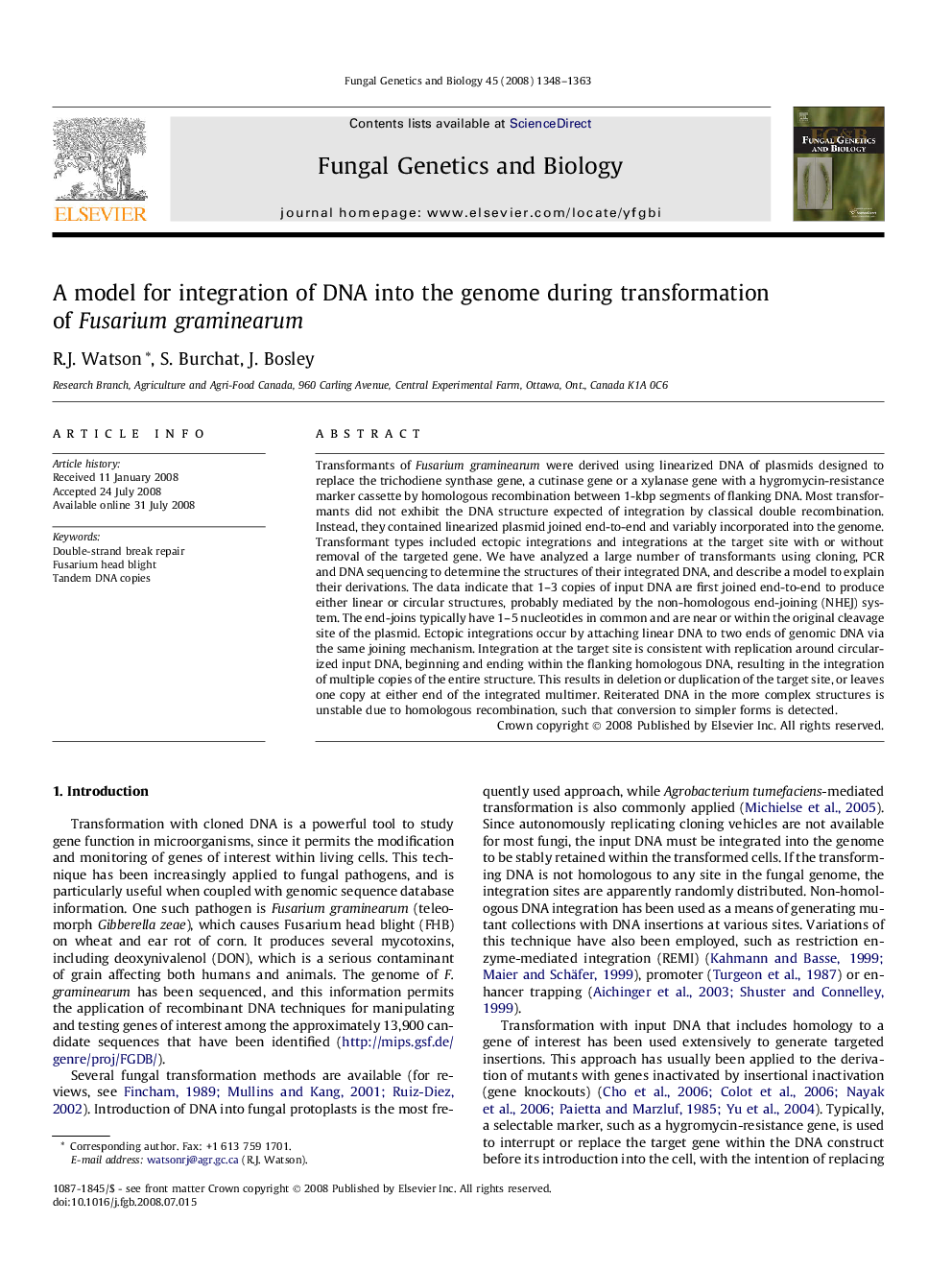| Article ID | Journal | Published Year | Pages | File Type |
|---|---|---|---|---|
| 10939635 | Fungal Genetics and Biology | 2008 | 16 Pages |
Abstract
Transformants of Fusarium graminearum were derived using linearized DNA of plasmids designed to replace the trichodiene synthase gene, a cutinase gene or a xylanase gene with a hygromycin-resistance marker cassette by homologous recombination between 1-kbp segments of flanking DNA. Most transformants did not exhibit the DNA structure expected of integration by classical double recombination. Instead, they contained linearized plasmid joined end-to-end and variably incorporated into the genome. Transformant types included ectopic integrations and integrations at the target site with or without removal of the targeted gene. We have analyzed a large number of transformants using cloning, PCR and DNA sequencing to determine the structures of their integrated DNA, and describe a model to explain their derivations. The data indicate that 1-3 copies of input DNA are first joined end-to-end to produce either linear or circular structures, probably mediated by the non-homologous end-joining (NHEJ) system. The end-joins typically have 1-5 nucleotides in common and are near or within the original cleavage site of the plasmid. Ectopic integrations occur by attaching linear DNA to two ends of genomic DNA via the same joining mechanism. Integration at the target site is consistent with replication around circularized input DNA, beginning and ending within the flanking homologous DNA, resulting in the integration of multiple copies of the entire structure. This results in deletion or duplication of the target site, or leaves one copy at either end of the integrated multimer. Reiterated DNA in the more complex structures is unstable due to homologous recombination, such that conversion to simpler forms is detected.
Related Topics
Life Sciences
Biochemistry, Genetics and Molecular Biology
Cell Biology
Authors
R.J. Watson, S. Burchat, J. Bosley,
